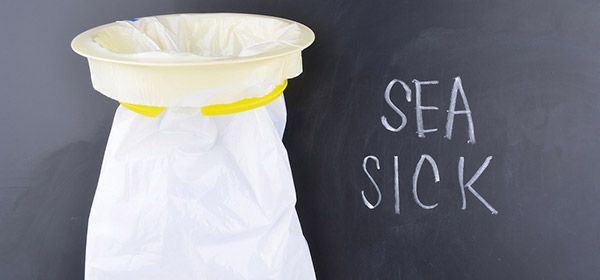Just thinking about seasickness is enough to make some people feel queasy. However, if you’re embarking on a cruise and don’t know the state of your sea legs, it’s best to play it safe and take something with you in case you hit inclement weather. The good news is that there are a number of options, but if you’re taking any other medicines, either over-the-counter or prescription, check with your doctor or pharmacist in case any interact. Also note that most remedies need to be taken a few hours before you sail, and not every remedy will work for everyone.
Over-the-counter medicines
One of the most common travel sickness remedies is Travacalm, which contains an antihistamine that also has an anti-vomiting effect. It can cause drowsiness, though, so be careful not to drink too much alcohol when taking.
Prescription medicines
Stemetil® (prochlorperazine) can now be bought from a pharmacy in small amounts, or by prescription for those who need more. It works by correcting chemical balances in the brain, including those that control nausea and vomiting. Maxolon® (metoclopramide) does a similar job, acting on the stomach and upper intestine to increase muscle contractions for proper stomach emptying, but it’s only available on prescription.
Wrist bands
These work by using a form of acupressure. There’s a point about two centimetres above the inside of your wrist called the Nei Kuan acupressure point, where the wrist band applies pressure using a plastic bead or button. You will need to wear it all the time to prevent seasickness.
Ginger
This is a common herbal remedy for sickness. There are many options for taking it, including capsules, eating crystalised ginger and drinking ginger tea, all of which are readily available from supermarkets and health food stores.
Green apples
Green apples are an old remedy used by sailors in the past; you may notice that many cruise ships have bowls of them in reception and at the buffet at all times. If you don’t see them around, ask for apples through room service.
The ship’s doctor
If your remedies of choice don’t work and you do become seasick, call the ship’s doctor and claim the bill on your insurance. The likely remedy administered will be an injection to stop the vomiting, which will also help you to relax and sleep.
Make smart choices, such as:
your ship: a large, modern cruise ship equipped with stabilisers is better able to handle the rolling and motion in rough weather.
- your accommodation: book a stateroom that is right in the middle of the ship and close to the waterline, as this is the natural balance point with the least movement. Make sure it has an ocean view, and if your budget can stretch to it, a balcony so you can get fresh air if needed.
- itinerary: don’t pick a cruise with too many sea days or long crossings in open ocean. Also avoid destinations where the ocean is known to be rough, such as the far North Pacific or the Great Southern Ocean, or a time of year when weather can have an impact, such as cyclone or hurricane season.
- do’s and don’ts: during the first few days, spend as much time as you can outside in the fresh air and use the horizon as a point to help maintain your equilibrium. Also be careful when reading a book or using a computer if the ship is experiencing some motion, and avoid enclosed spaces.
- food and drink: avoid rich or fatty foods, and drinking too much alcohol, as it speeds up dehydration, which can cause nausea. Also, don’t cruise on an empty stomach.
To find out more about cruising or to find the cruise of your dreams within your budget, visit CruiseGuide.com.au.

